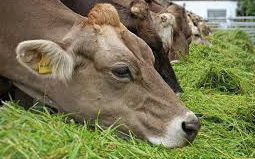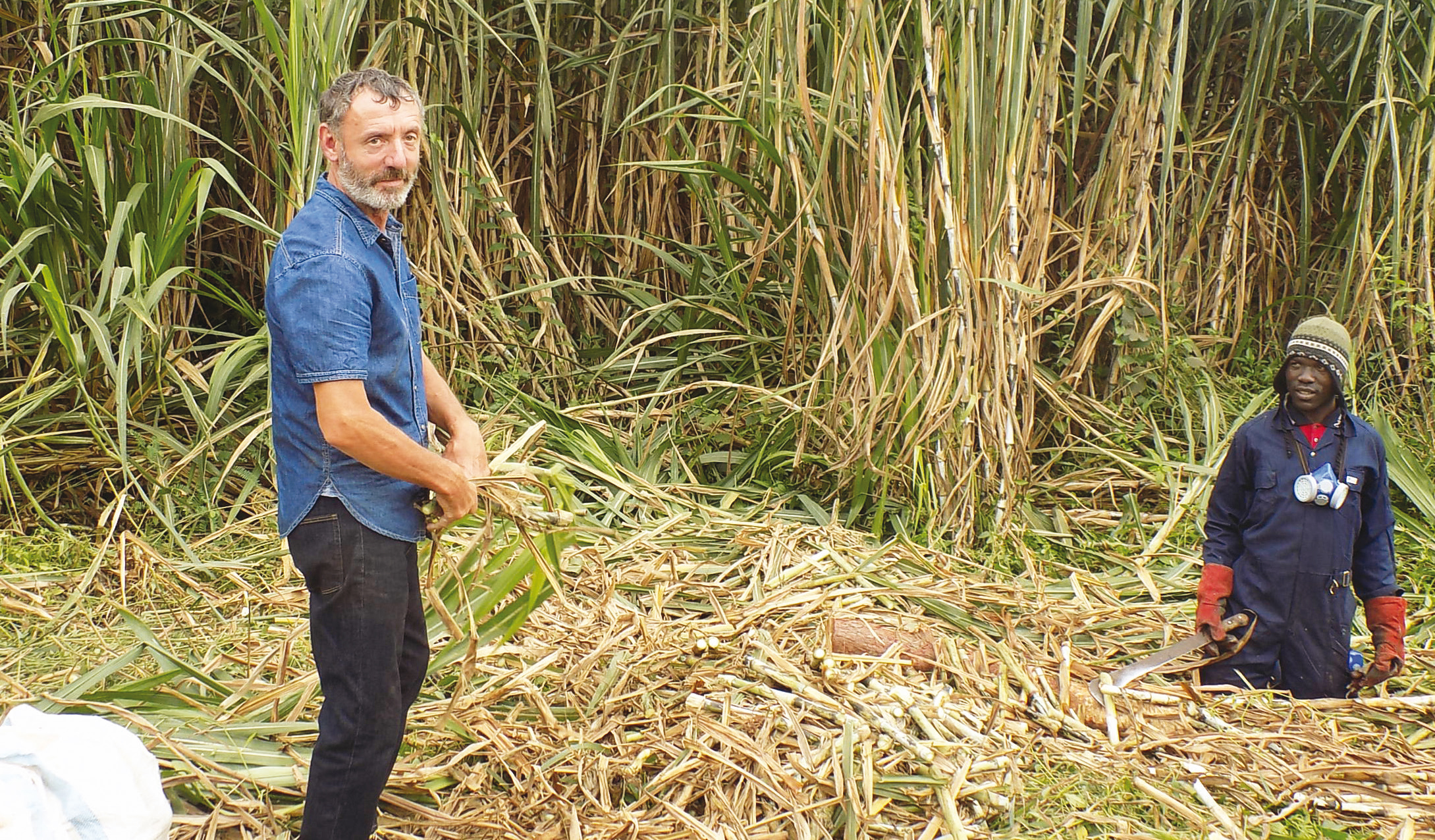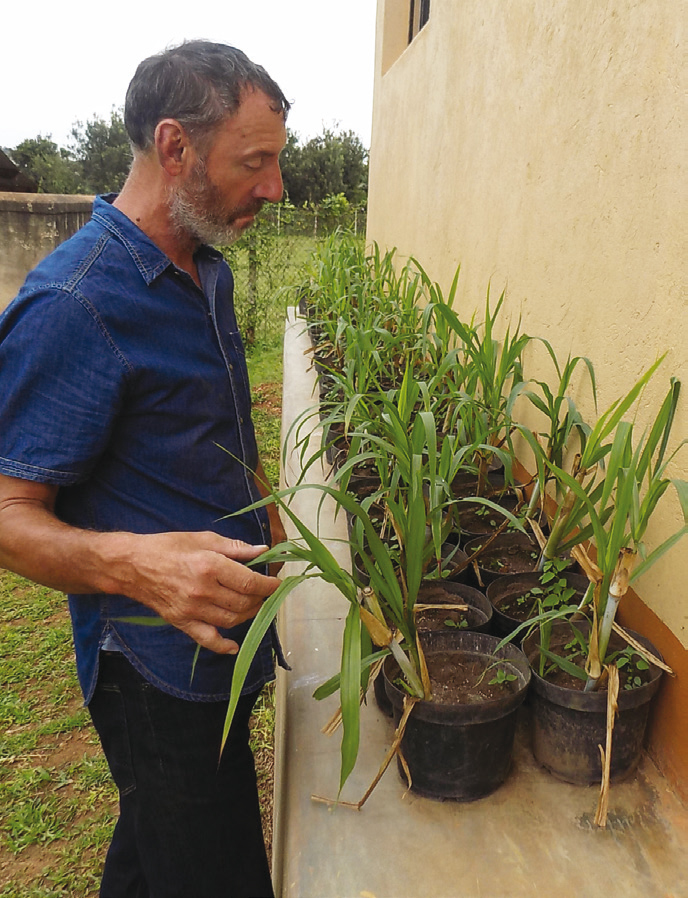Farmers to get improved grass

THE CHALLENGE
Most dairy farmers inUganda find difficultyin getting nutritiousfeeds for their animals.This usually results inlow production.
THE SOLUTION
Many organisations,including the The GreenElephant are coming upwith fast-growing grass

By Joshua Kato
Started about two years ago,The Green Elephant (TGE) isadding value and improvingpastures, especially grass.The farm has a factory forprocessing briquettes fromwaste wood and grass, plusaround three acres for growinggrass. The farm has also gotanother branch in Luwero,sitting over 25 acres and isspecifically used for growinggrass.
The main forage here isimproved napier grass. Napier,commonly known as elephantgrass (pennisetum purpureum)is a major feed amongsmallholder dairy farmers inUganda, especially those whopractise zero grazing.
According to Chris Littlejohn,the in-charge of the pasturedevelopment at the farm,Uganda’s climates is goodbecause of the two six-monthgrowing seasons.
“In Europe, growing seasoncan only last four to fivemonths,” Littlejohn says.
He further explains that,there is grass known as ‘energygrass’ that improves fertility ina very short time. Such grassincludes napier or elephantgrass.
“Energy grasses, of whichnapier is the main type inAfrica, have the ability todeliver high yields on poor26 NEW VISION, Friday, April 20, 2018 HARVEST MONEYCreative solutions to the challengesyou face on your farmFARMING Innovations THE CHALLENGEMost dairy farmers inUganda find difficultyin getting nutritiousfeeds for their animals.This usually results inlow production.THE SOLUTIONMany organisations,including the The GreenElephant are coming upwith fast-growing grassFarmers to get improved grasssoils and they improve soilquality,” he says. Littlejohnexplains that in countries likeThailand, energy grasses areused to regenerate depletedsoils of paddy rice fields.
Good variety
Napier or elephant grass hasbeen cross-bred with othercrops to get varieties withimproved growth as well asprotein and sugar content.
“Two notable new cultivarsare sweet napier, napier xsugarcane and Pak Chong,napier x millet,” Littlejohn says.
Sweet napier, napier x sugarcane and Pak Chong,napier x millet are the varietiesthat are being grown on thisfarm. The latter has higherprotein content and theformer is higher sugar contentthan native napier. Yields ofPak Chong on good soils inThailand reach an impressive450 tonness per hectareannually.
“Pak Chong was recentlyintroduced into Uganda byThe Green Elephant and theaverage weight of the firstharvested plants after fourmonths of growth was 15kg.At a planting rate of 10,000per hectare, it translates into150 tonnes,” Littlejohn says.This was despite the fact thatit was planted on poor soilswith fertilisers and irrigation.Regrowth to harvest time, onceestablished, is two monthswith a yield of 60 tonnes perhectare.
Long production cycle
The improved napier alsohas the advantage that itsproduction cycle is seven years,so establishment costs are oncein seven years.
“There is no requirementfor annual tillage and onceestablished, it will outcompetemost weeds, reducing the needfor weed control.
The main diseases and fungal challenges are stunting diseaseand smut,” Littlejohn explains.
Harvesting is done by cuttingoff the stems about 30cm fromthe base and then trimmingoff the upper leaves for feedingcattle while the stems cuttingsare re-planted.
Sweet napier produces anaverage of 25 stem cuttings perplant and Pak Chong 50.
“For Pak Chong, only 50plants are required to provideenough cuttings for onehectare or one-and-half acresand this is repeated every twomonths. The one hectare willthen provide enough cuttingsfor 50 hectares,” he says.
The role of TGE is to utilisethe growth potential of theleading napier cultivator to,in the first instance, developa profitable forage producingplantation and secondly toenable this model or attributesof it, to be adopted by otherfarmers.
The knock-on benefit will bethe increased supply of feedsto the cattle industry.
Selling cuttings
Dr Jolly Kabirizi, a forageand livestock consultant,who worked with NationalAgricultural ResearchOrganisation (NARO) for over30 years, says the introductionof these fast growing and high yielding livestock grasses willgreatly improve the sector.
At the moment, the farmhas started selling cuttings tofarmers, while the leaves aresold to cattle keepers as feeds.A 60kg bag of cuttings goes forsh20,000.
Farmers around Kampala,most of whom practisezero grazing, now have aguaranteed supply of qualityforage.
“The quality of cattle is goodand yields of 35 litres per dayat peak yield are achievable byfarmers who feed their cowsadequately,” Littlejohn says.
Paul Magala, a zero grazerwith three dairy cows, who hasused improved Napier saysthat his cow’s milk yields areimproving. “Milk productiongoes up by three litres whenyou feed with this napier everyday,” he says.
Managing napier grass
The rapid growth and highyields napier grass requiresregular application of nitrogen(N) and phosphorus (P) eitherthrough farmyard manureor inorganic fertilisers suchas urea and NPK. Highyields of Napier grass can bemaintained with application ofdairy cattle slurry, a mixture ofcow dung, urine and feed leftover, available from the zerograzingstable.
This should be buriedbetween napier grass rowsto avoid loss of nitrogen byvolatilisation. The slurry isapplied after the onset of longand short rainy seasons.
Napier grass is ready forharvesting 3 – 4 months afterplanting when the plantsare about one metre highdepending on soil fertility,soil moisture and overallmanagement.
Cut the plants to about 5cmfrom the ground during therainy season and 10 to 15cm during the dry season.Regrowth can be harvestedwhen it reaches 2-3 feet (60-90cm) high about eight weeksbetween cuts.
Growing Napier grass
Napier grows best in deep,fertile, well-draining soils. Itis drought tolerant and canbe used as dry season reservein dry areas and can beobtained from plants about toflower.

Littlejohn and The Green Elephant worker prepare to cut napier grass on their plantation. Photos by Joshua Kato
Advantages of Napier grass
Napier grass is easy to propagate andmanage.
- It produces high dry matter fodderyield (20-35 tonnes per hectare per year)
- It has good palatability and goodnutrient content (10-12% crude protein)at early stages. Proteins are key tolivestock growth.
- The grass produces good silage whenharvested at around six months.
- It is widely used for soil and waterconservation in hilly slope areas and canserve as a windbreaks
- It is an important tool in the integratedmanagement of striga weed and stemborers of maize and sorghum due toits importance as a trap crop for theseweeds and pests. What a farmer does isto plant at least 10 plants in each acre ofmaize or sorghum.
- Many farmers without animalsproduce Napier grass fodder (freshor conserved) or planting materials(cuttings) for sale to dairy farmers.

Littlejohn is optimistic that the newvarieties will improve dairy production




